The Vitals
Date: April 30 to May 10, 2025
Location: Yunnan, China
Distance: ~350 km, some hiking
Partners: Brittany
Resources: Cycle Fiesta. We cribbed most of our itinerary from this trip report.
The Trip
Part 1 finished at approximately the half way mark of our tour in the town of Shaxi. This town is over 1300 years old and is more beautifully preserved and restored than the other “ancient towns” we visited. It was a trading town along the Tea Horse Road and has a public square and stage with the most interesting sight being the Ouyang Courtyard, an old inn for well-off merchants.
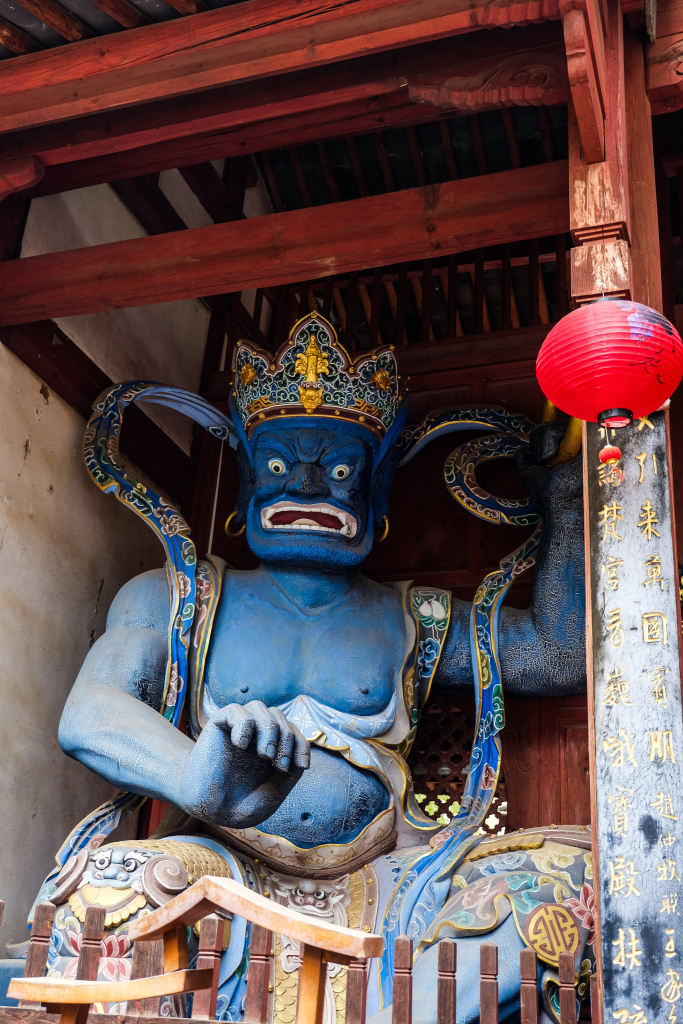
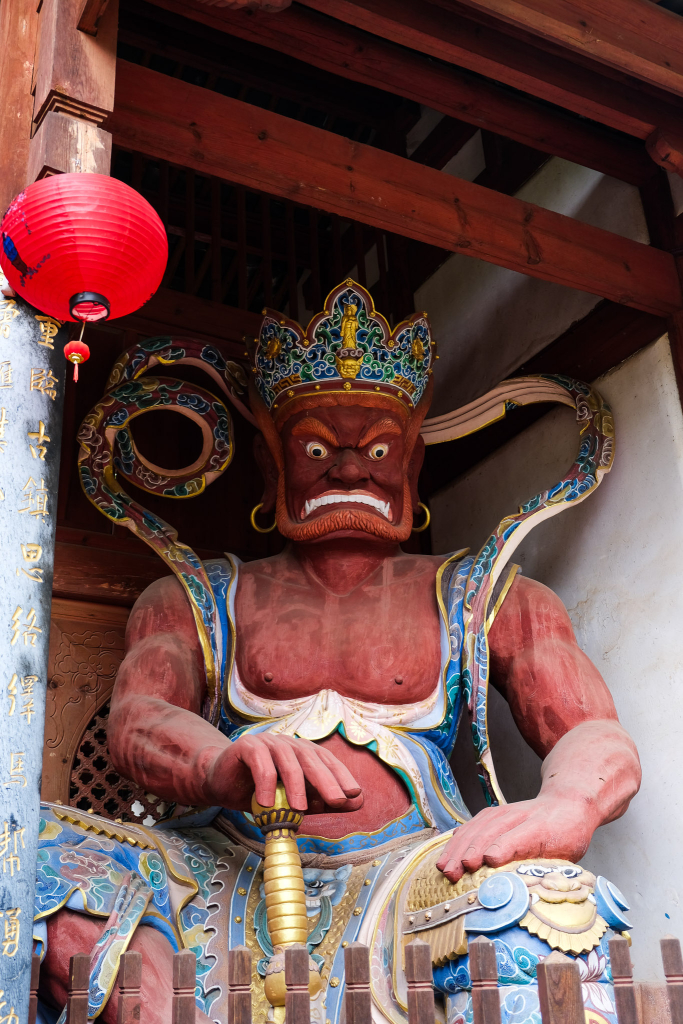
The inn had many beautiful artifacts from the caravan days, with carved wooden beds and chests, old tableware and cooking equipment, and a few small rooms open to explore.
We took another day off in Shaxi to copy Cycle Fiesta, during which we got a taxi to Shibaoshan to check out the rock carvings and grottos. Like the town, these carvings are also over 1000 years old. We wandered around on a humid day and kept an eye out for colourful birds before returning to the old bridge in town for evening people watching.
Another common sight in town is ham hanging in the rafters of restaurants, hotels, and homes. I think the ham hangs for three years and was the culinary highlight of the trip. We also saw what looked to be lungs with pine cones pushed into them air-curing in the same way but we did not sample this food.
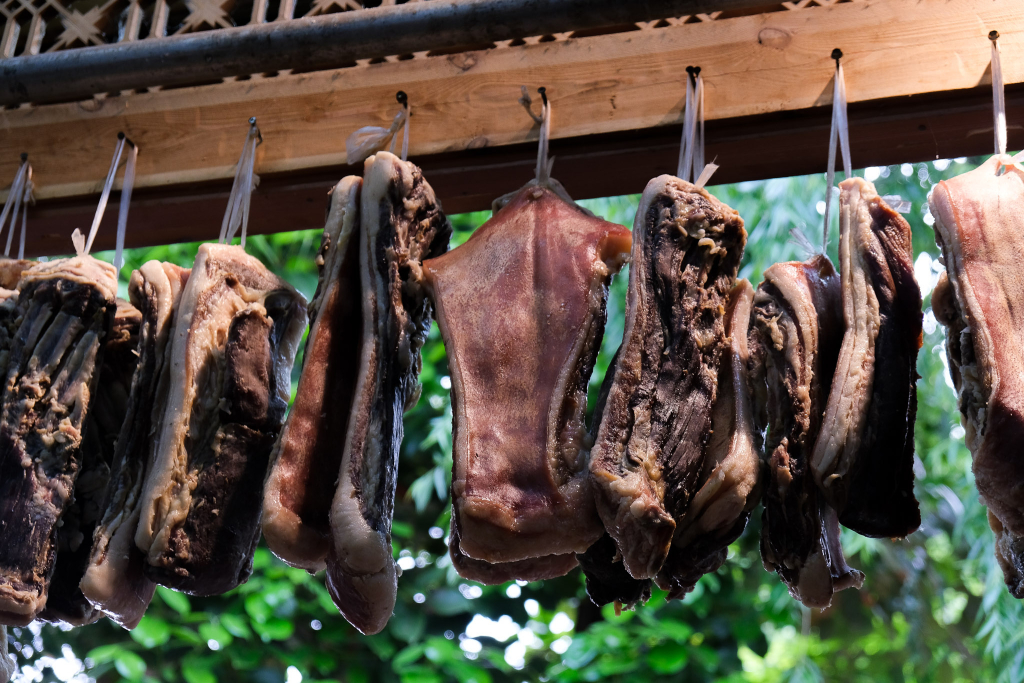
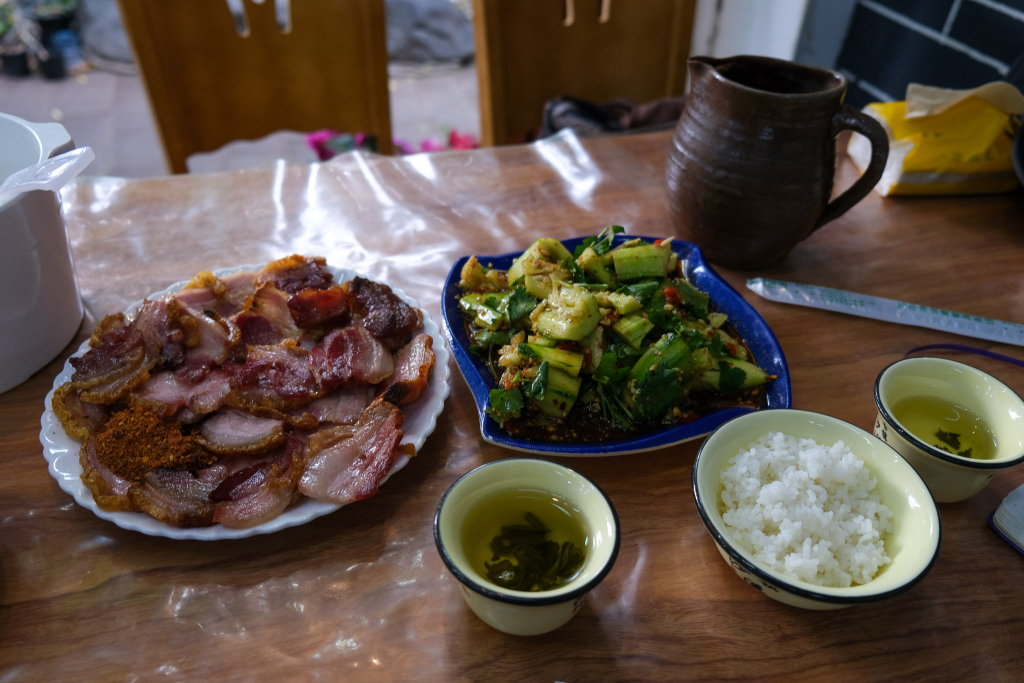
From Shaxi we rode a quiet and gently graded mountain pass to the adjacent valley to the east. With another expressway tunneled through the mountains, the mountain road had very little traffic but it rained most of the day and the descent was cold and we got covered in muddy spray. Once on the other side, we began to follow canal roads south in the dead-flat valley through lots of farming activity. This was delightful riding despite the damp weather and we ended in the small city of Eryuan.
Eryuan is known for hot springs and we stayed at a large but sparsely populated hotel and spent 90 minutes in the pool fed from the hot springs. It was not overly warm but it was very relaxing. The hotel seemed like it had been more glamorous in the past but maybe it is just overshadowed by the “Dali Geothermal Paradise” elsewhere in town that we did not have a chance to visit.
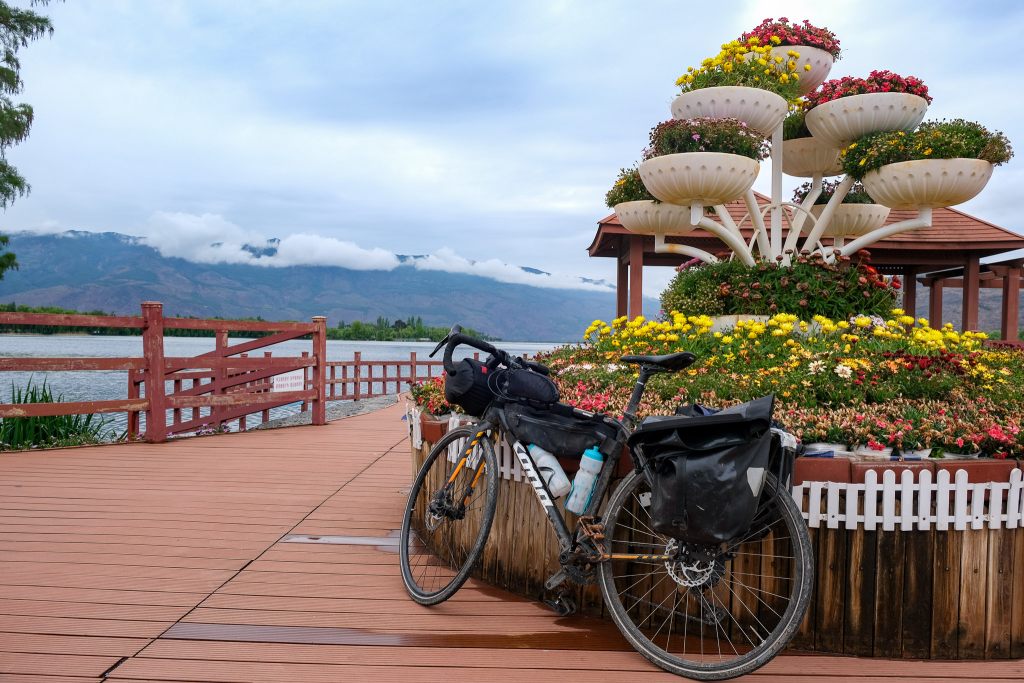
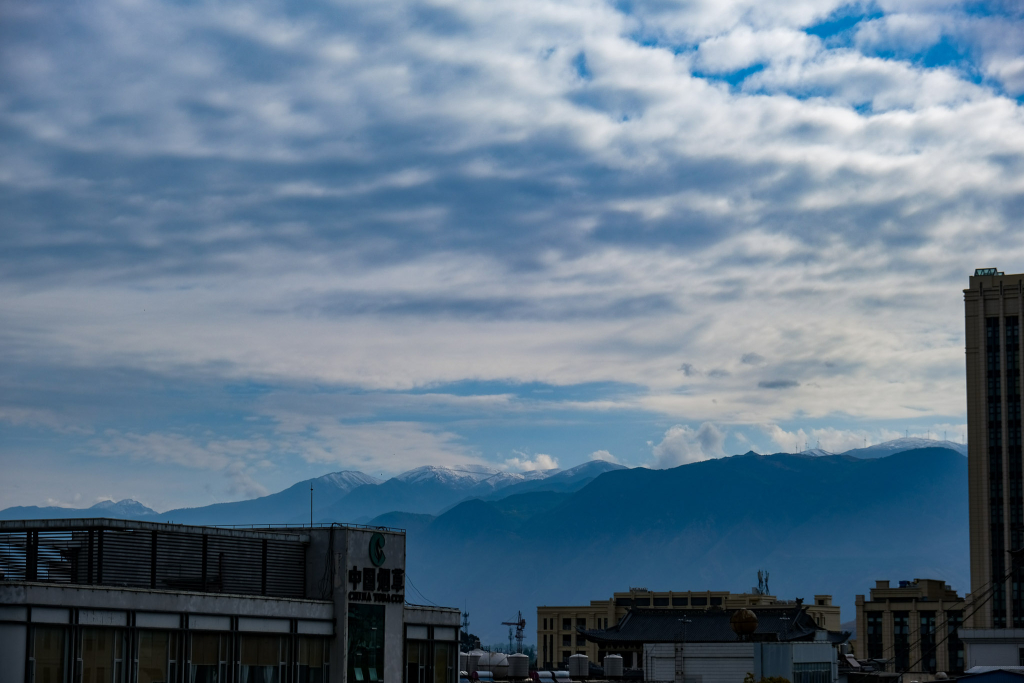
In the morning we continued south where the destination was the largest urban area of the trip – the city of Dali on the shores of Erhai (Er Lake). The riding began on a busy road and we had to carry our heavy bikes up and down a bunch of stairs when we tried to leave it for quieter, rural streets. In one of the small towns we hit market day and had to slowly wade through the masses buying and selling produce before we could eventually find our way to the edge of the lake.
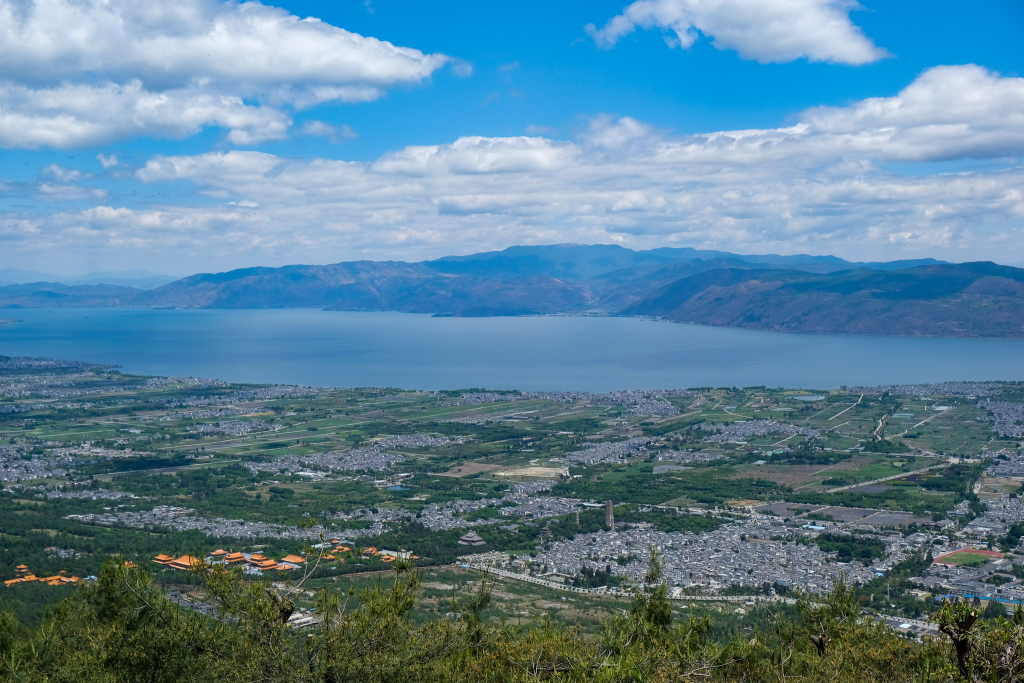
We were excited to ride the western shore as it has a wide, paved cycling path the entire length of the lake (maybe 40 or 50 km) but we hadn’t gone far from the north end when it started to get very congested with domestic tourists on rented bikes and various electric contraptions (like scooters shaped like Snoopy’s head). It was slow going and chaotic but also somewhat expected as it was now the Labour Day Golden Week – one of the three busiest annual travel periods for the Chinese along with the Golden Weeks around Chinese new year and the National Day. All three of these holidays have 7 or 8 days off for workers and popular tourist destinations like Dali get very crowded. We had known the holiday was coming but couldn’t figure out a way to alter our route to avoid Dali during the it.
Once we left the lake to find our hotel, we rode through some fields of rose bushes with an overwhelming aroma. These roses are used for the flower cakes I mentioned in the first post and are still a popular local sweet.
We took two days off in Dali and there are some unique aspects of the city (the three pagodas, a chairlift ride into the Cangshan mountains for a small hike, sitting for a caricature artist to draw our portrait) but we felt a little overwhelmed by the crowds that were a stark contrast to the rural quiet we had enjoyed earlier. One thing we particularly enjoyed in Dali was the food. The street food options were varied and delicious and we had a break from more traditional fare by sampling a pizza shop and a Thai restaurant.
From Dali we planned to spend a day apart as we took different routes to the town of Shuanglang on the eastern shore of the lake. The west shore with old Dali has the aforementioned Cangshan mountains: decently tall, green, and misty while the eastern shore hills are lower and yellow with dry grasses. From Shuanglang and our hotel with a balcony over the water, we expected nice sunsets and a more serene atmosphere.
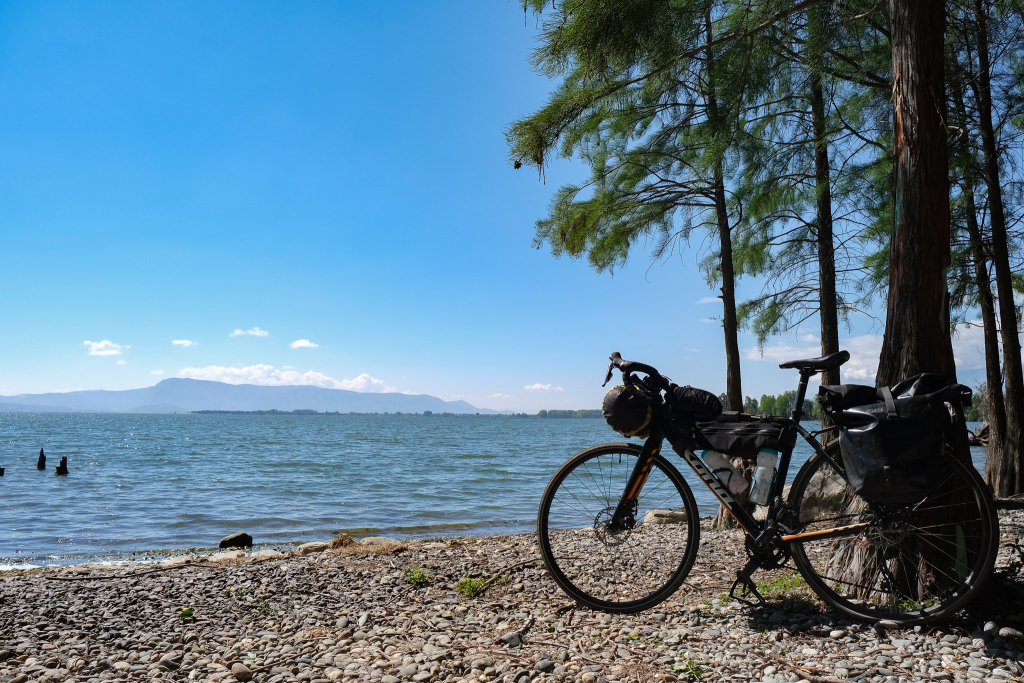
Brittany’s plan was to take a ferry across the lake, starting about 30 km from the hotel. My plan was to ride about 70 km counterclockwise around the lake. I started on the cycle path, heading south before the crowds arrived, and continued until it ended at the newer, urban Dali situated at the bottom of the lake. There, I joined the busy streets and made my way through the city until I could turn back north. There is no cycle path on the eastern shore but it turned out to be a very pleasant ride. There was some traffic and some small towns, but way fewer people and just some small hills. I was enjoying the tailwind so I didn’t take break to check my phone until I was in Shuanglang. There I had a message from Brittany that the ferry had broken down so she would be riding all the way too, but in a clockwise direction around the north end of the lake.
I found our hotel down a narrow alley and checked in before heading back to the main street to meet Brittany who rolled up just 20 or 30 minutes after me. That morning, between the two of us, we had encircled the lake (about 135 km). I think that’s really fun and it is not at all out of the question to ride the entire loop solo in a day. I would recommend structuring the ride to miss the areas nearest to old Dali in the middle of the day.
Our afternoon and evening in Shuanglang was a bit opulent as we had sprung for a higher-end hotel. After check-in we were served freshly made waffles and coffee while we lounged on a gorgeous platform jutting out over the lake in comfortable chairs. We wrote postcards, made a few timelapses, and then headed out for dinner. Another regional delicacy is mushroom hotpot where you must cook the mushrooms for 20 minutes before eating to break down the hallucinogens and toxins. This was the dinner we chose on a sunny street with purple flowers and an open front as people strolled by.
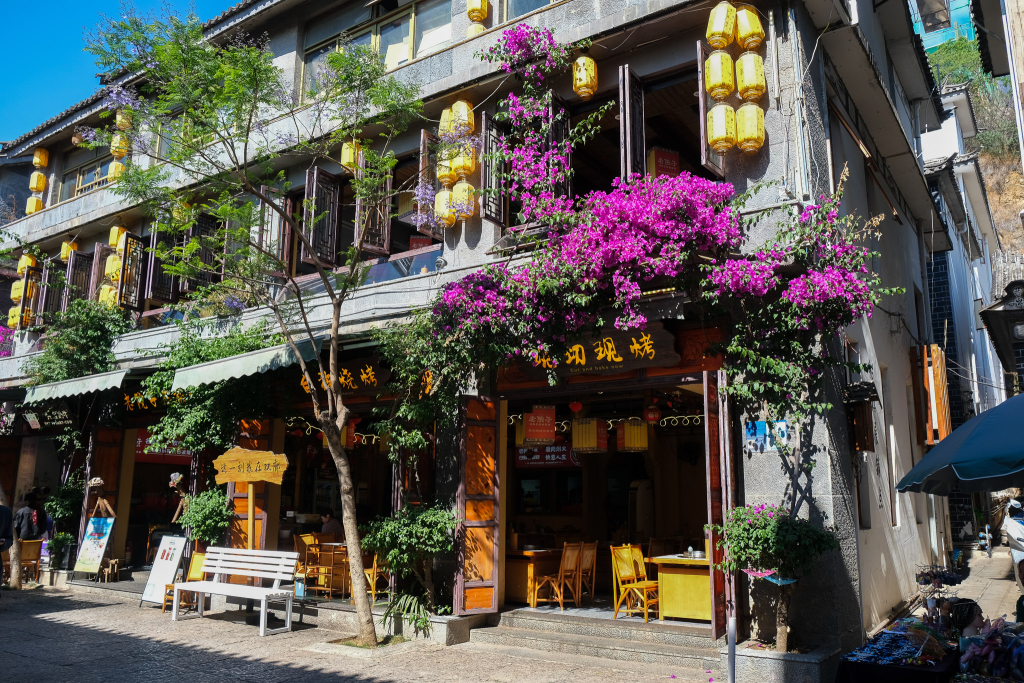
After dinner we walked up and down town looking at the shops and restaurants that had more variety than some of the other towns we had visited. In the evening, the hotel served us warm milk and we went to sleep in the giant bed facing a huge window with views of the lake and the western mountains.
Well-rested we turned our attention north as we were now only two riding days from finishing our tour. From Shuanglang, we traced the lake in reverse of what Brittany had done the day before until we returned to the agricultural valley zone we had ridden through a few days prior but used a different route to return to Eryuan. From Eryuan, we began to retrace our path along the canal roads which were even more pleasant on a nice day until we finished at the town of Niujie.
Just like Eryuan, Niujie has hot springs, and just like Shuanglang, we had splurged for another nice hotel. Our room had a private tub made of river rocks where we could pipe in the water from the springs but we didn’t use this tub. Since there seemed to be only one other couple in the entire hotel, we chose to use one of the outdoor baths which were just as private. Situated on a hill overlooking the valley to the south, our private tub afforded us views of the pretty landscape we had ridden through earlier in the day and we spent a long evening soaking and talking as night fell.
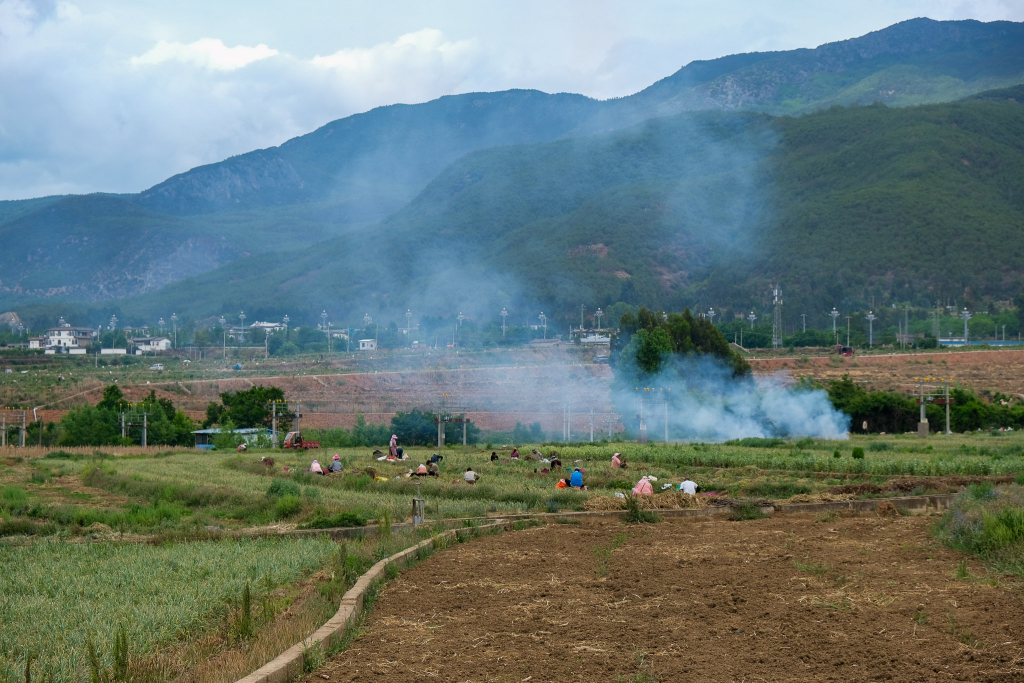
For our final real day of riding we would head into the hills one last time to follow rural roads over a mountain pass rather than try to navigate the major roadways. Just north of Niujie, we left the main road to start the climb but it was an inauspicious start as the pavement was broken and potholed and we were being passed by many dusty trucks.
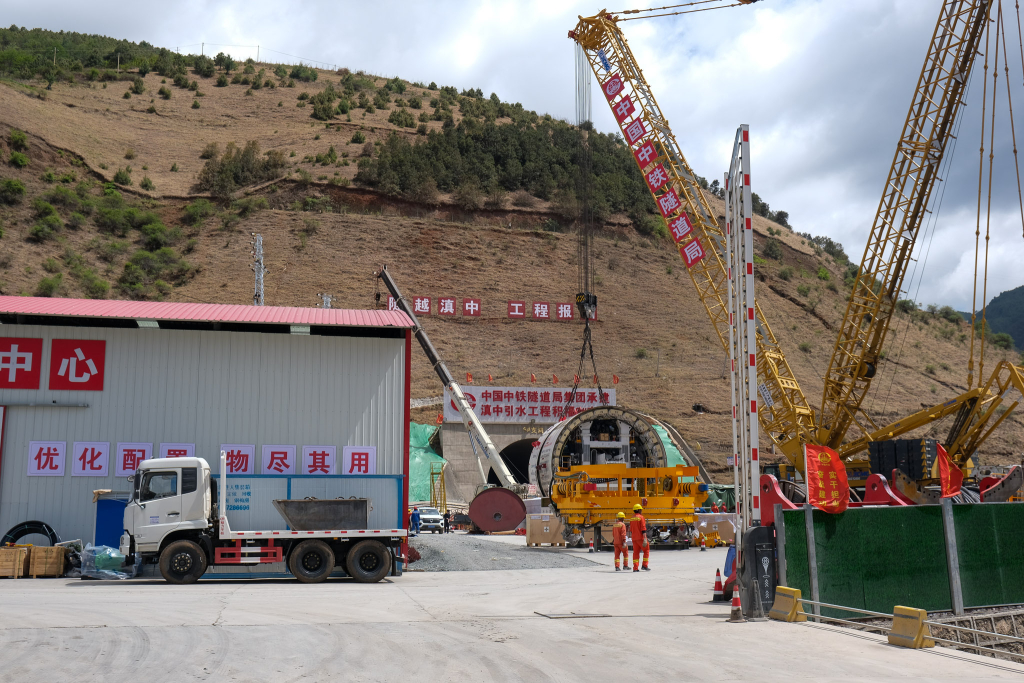
Over the next hour or two, we kept hoping the road would improve until we reached a major construction site. It turns out there was a major project being accessed by our route, with tunnels being bored through the mountains and concrete pillars high in the sky to support a future road or rail line. At least the traffic and broken pavement should improve after this, right? Alas, the remainder of the climb was still rough and dusty and the beginning of the descent was no better. We were grumpy as we bounced our way along, trying to avoid the hard edges of lifted concrete and hugging the sides when a big truck lumbered past. This was a real shame, as I had been really excited for a serene setting in the mountains on our last day.
Eventually we popped out on a large new road whose switchbacks led down to the valley. Along the way I saw two large snakes (5-6 feet long) but they were a poor consolation prize. Both of us were ready for a shower and a rest when we reached the town of Heqing and yet another large hotel with few, if any, other patrons.
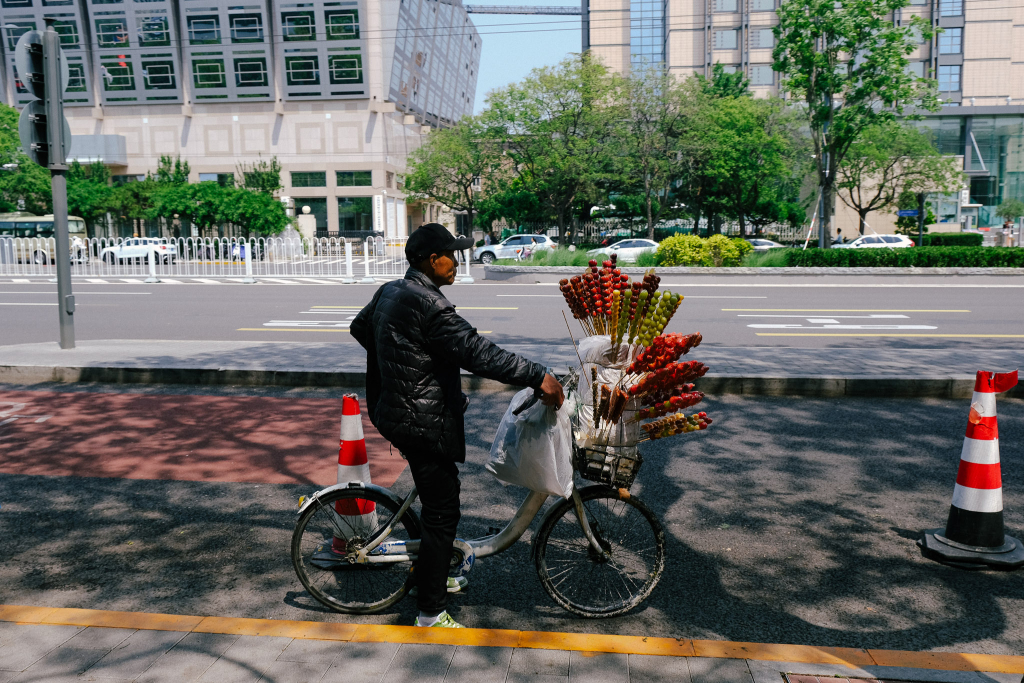
The area around our hotel seemed completely dead but there were some wetlands nearby with a ton of different bird species and especially nesting egrets. We scrounged up a BBQ dinner and did our laundry (most hotels seem to have free laundry, a service we took advantage of many times over the three weeks) on what we considered the last real night.
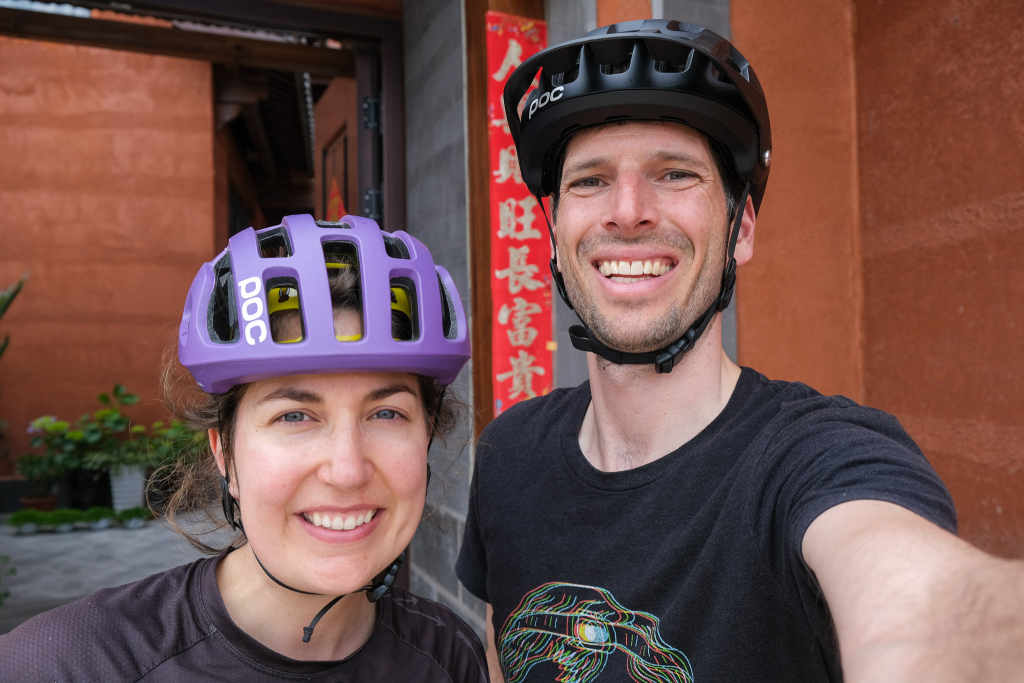
In the morning, we needed only to return to our original hotel and pack up the bikes before the journey home. We extended the ride to 30 km by meandering over the flat valley bottom. First by circling the wetlands, then by following a path lined with flowers before circling the airport (and watching a jet land, very loud). Reaching the end was a bit underwhelming as I previously described the town around the airport as being unremarkable but it still felt good to pack up the bikes without incident and enjoy a well-earned dinner.
We had one last thing to look forward to as we would be spending a 24 hour layover in Beijing on our way home. Our luggage was once again checked through to Vancouver after a lot of negotiation with the airline staff, so when we arrived in Beijing we just had our carry-on with us as we navigated the trains to our hotel in the center of the city. It was raining when we arrived but sunny again in the morning as we walked to the Forbidden City.
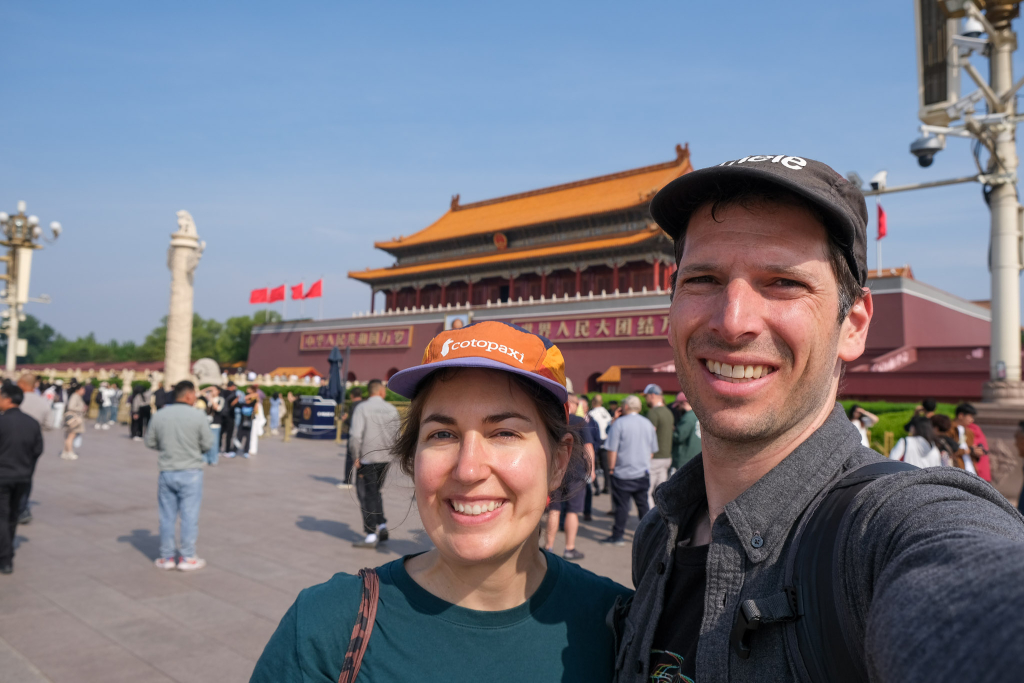
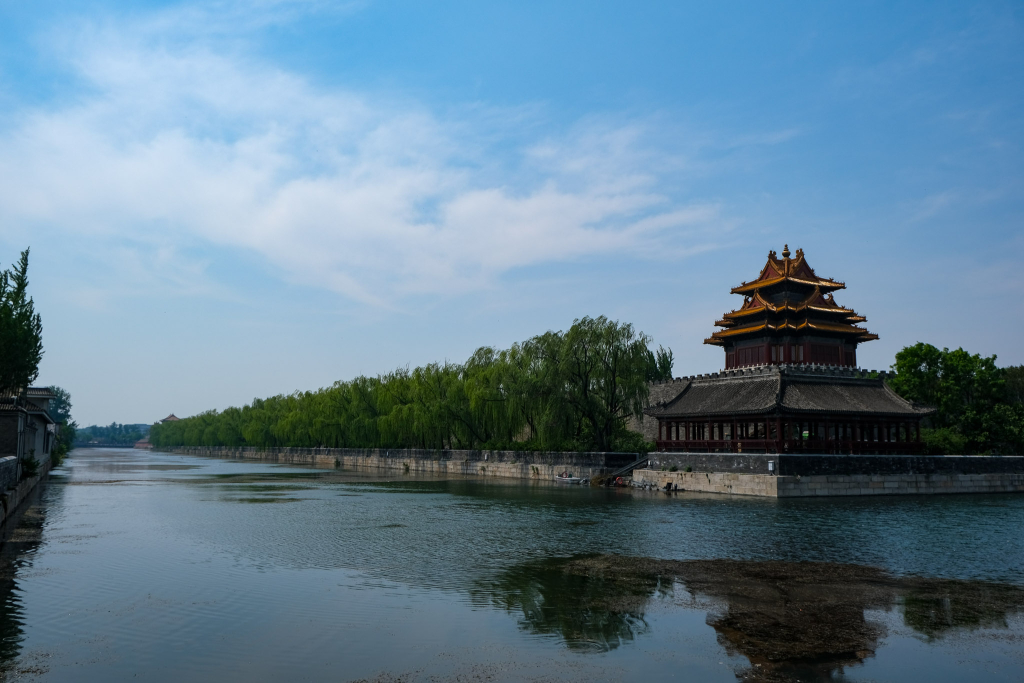
We had time for one, very brief tourist attraction before we would need to return to the airport and this was our choice. Unfortunately, it was even more brief than planned as three security checks and a standoff over whether I would be allowed in with my bike helmet in my bag (it’s armour, I guess) ate up a lot of time. Two layers of management later, we were permitted for a 60 minute dash through the massive squares within the city walls and some of the rooms of artifacts.
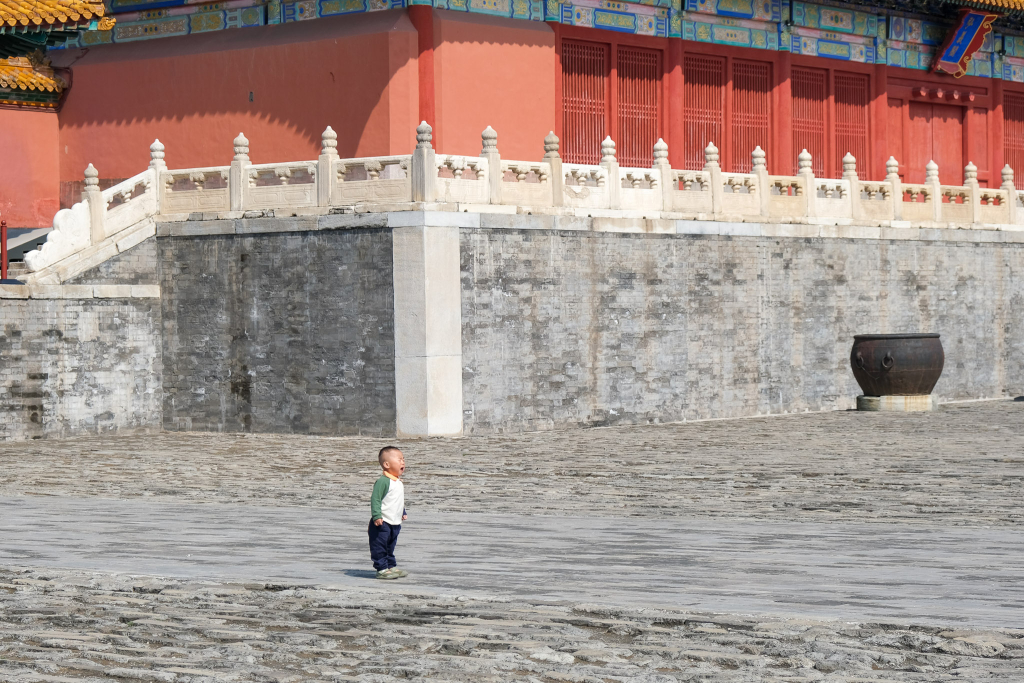
You enter the Forbidden City at the south end across from Tienanmen square and exit at the north end after crossing the square moat around the complex. We made our way to the airport by train (security check to get on the metro) before completing our fifth and final security check of the day on our way to the gate, ready to head back home.
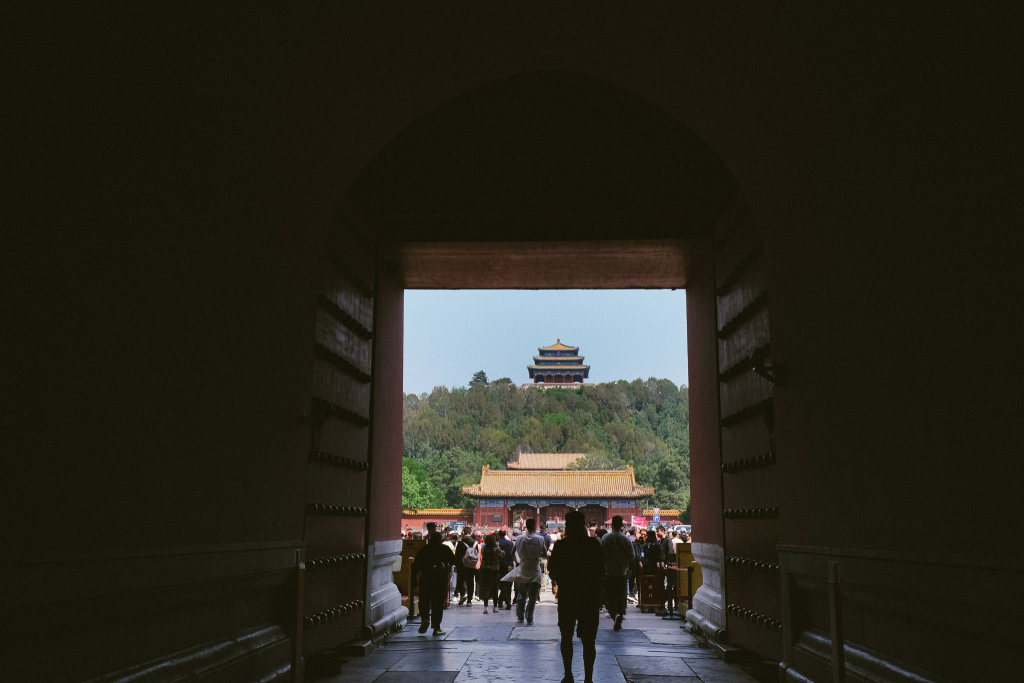
Overall our tour was successful in that we kept it light with riding days around 60 km, though with decent elevation gains, and many days off. We learned that our standards have changed over time as we progressively booked nicer and nicer hotels throughout the three weeks but there is simply no comparison to the cost of hotels in Europe or North America. We were surprised by how different the landscape was in this part of the province, 250 km from where we had started our tour in 2018. Even within the three weeks, we traveled through pine forests, high alpine peaks, low vegetated mountains, and dry hills. We had some moments of tranquil rural cycling and traffic-free roads but also teeming masses and overcrowded tourist traps. It was not exactly what we expected but worth it to fill in the blanks on our personal map of Yunnan province.
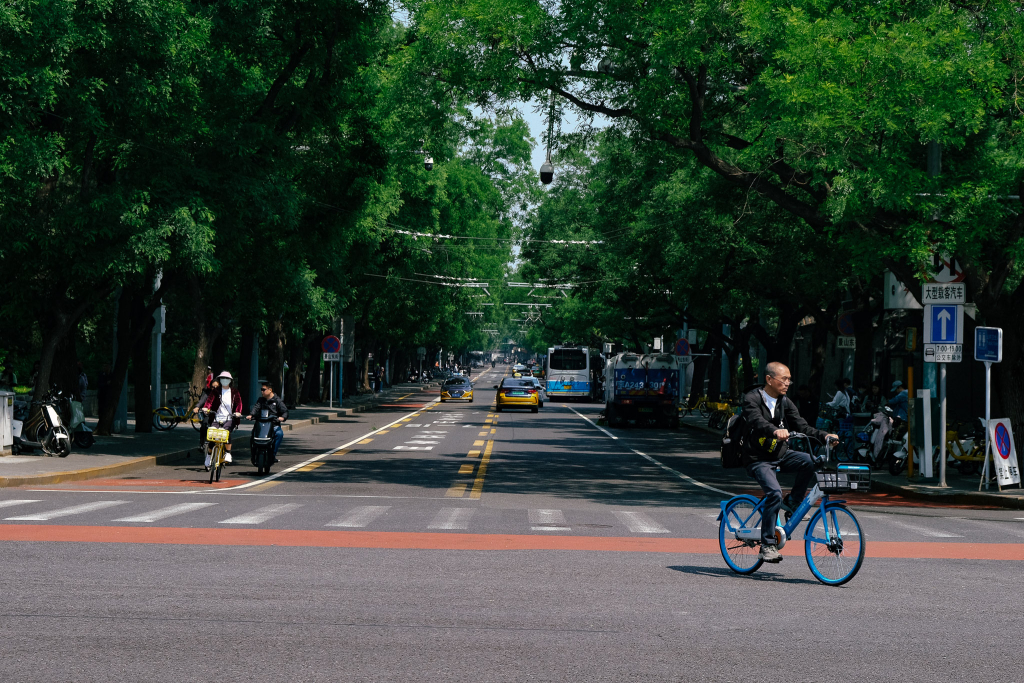
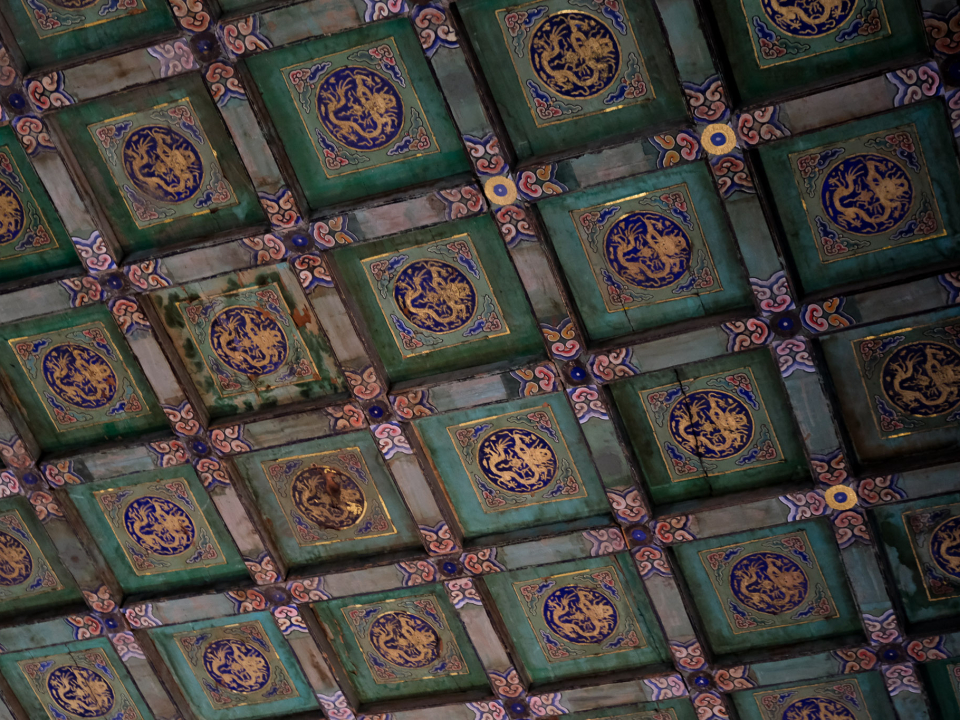
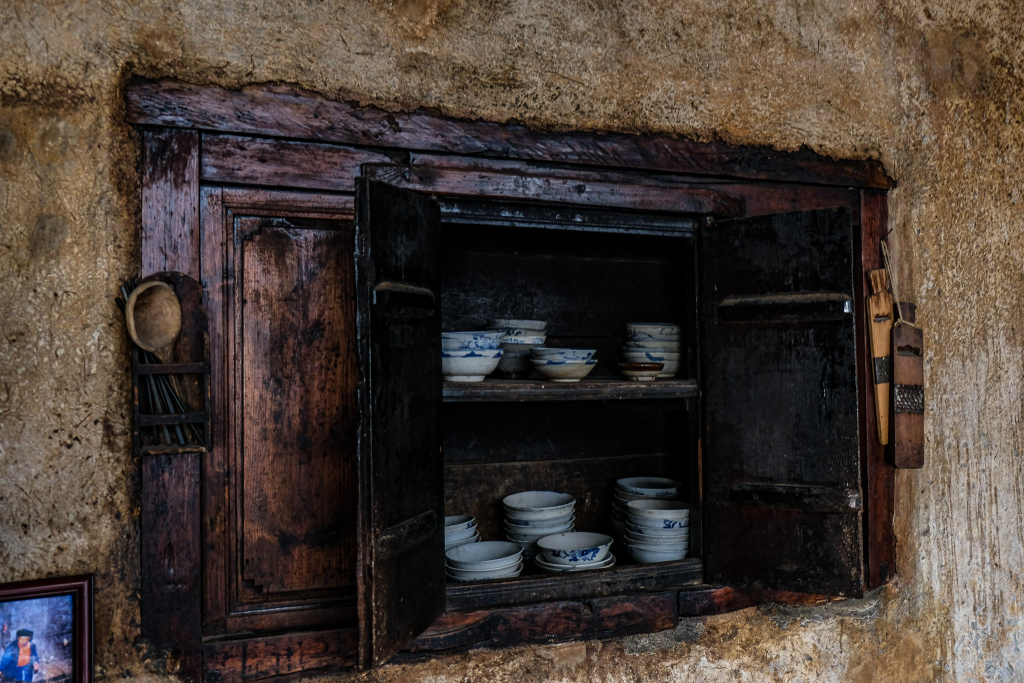
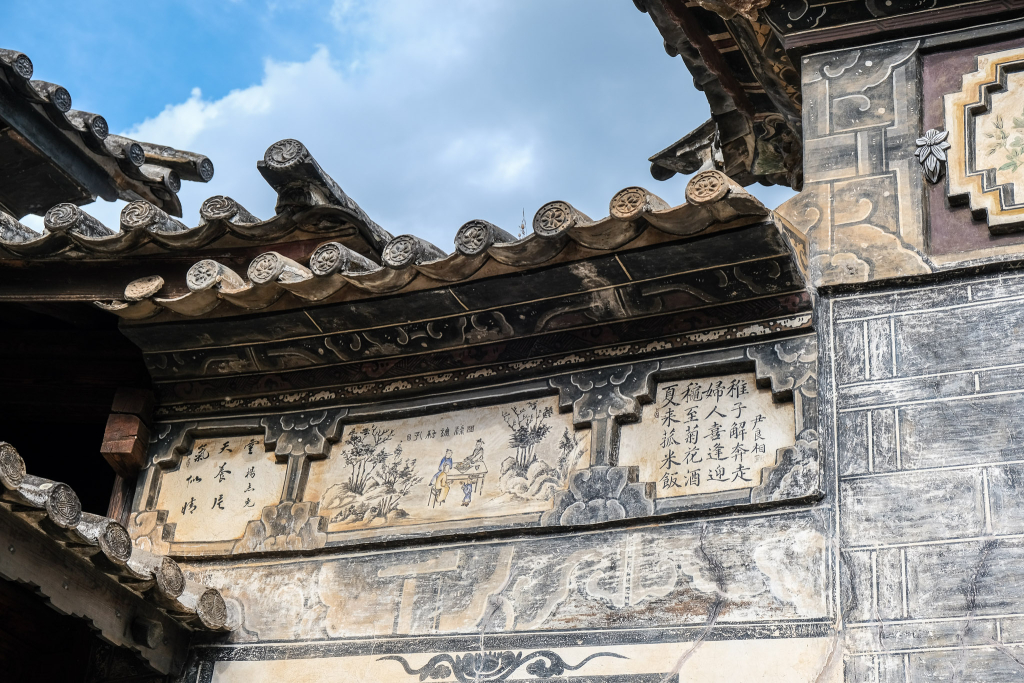
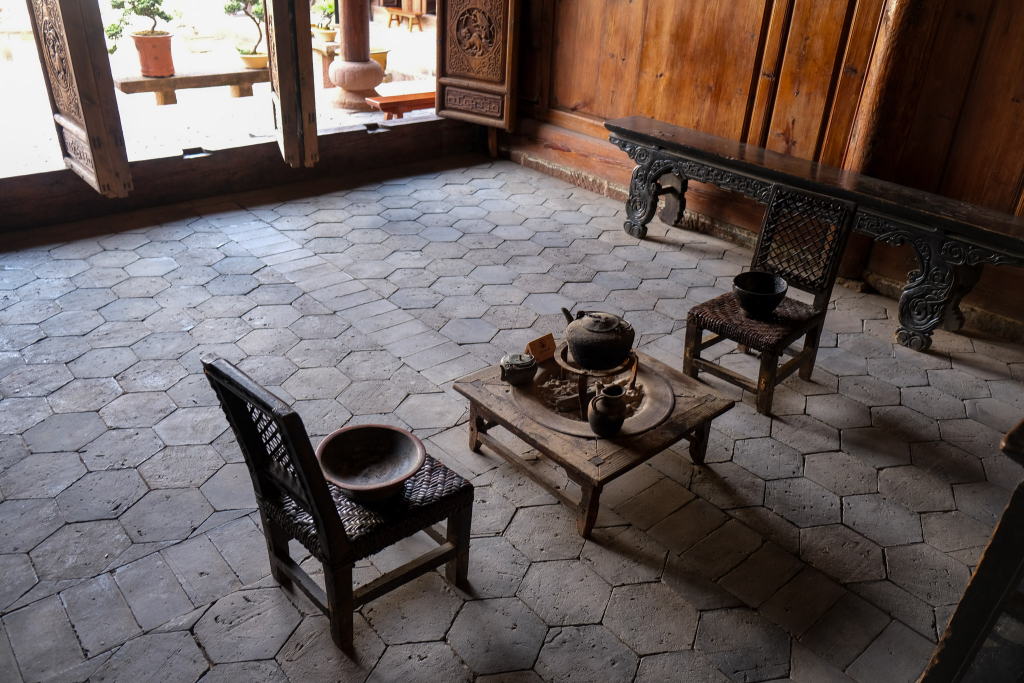
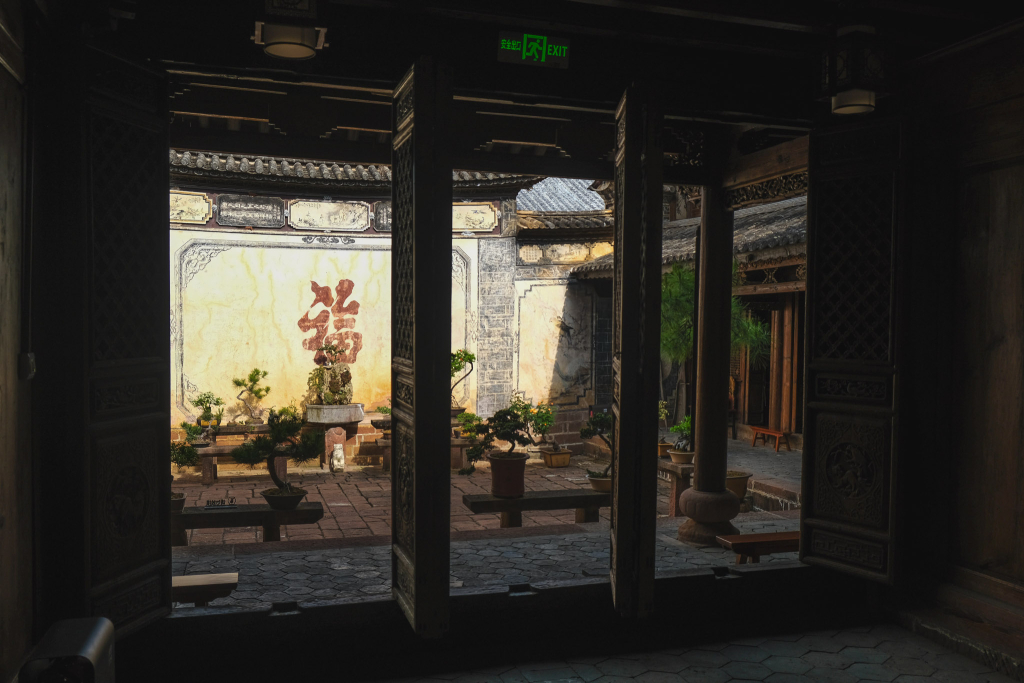
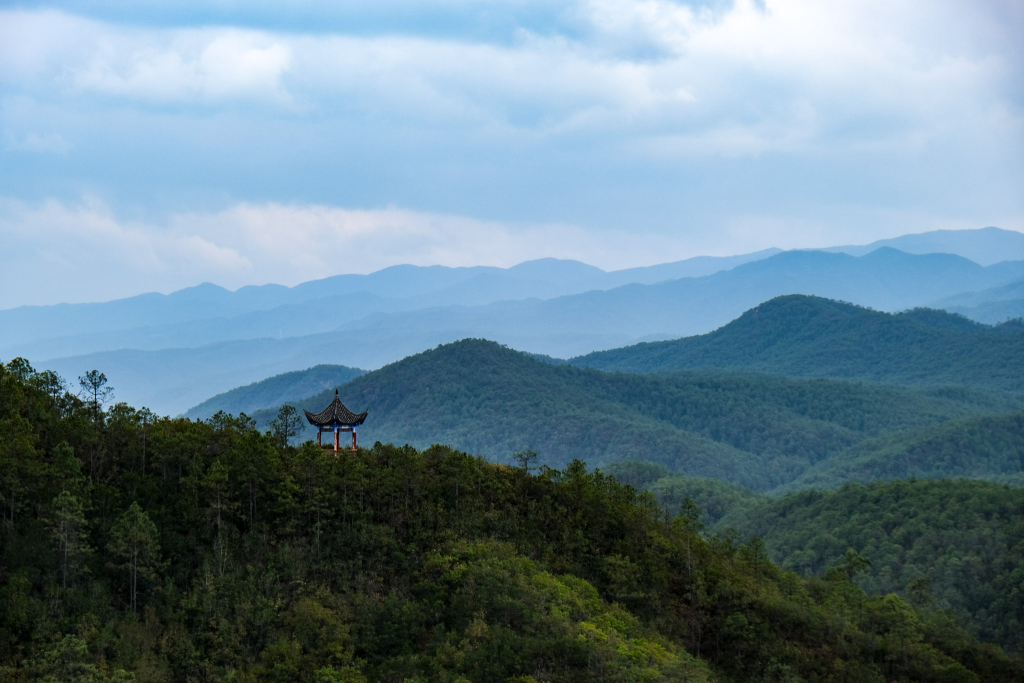
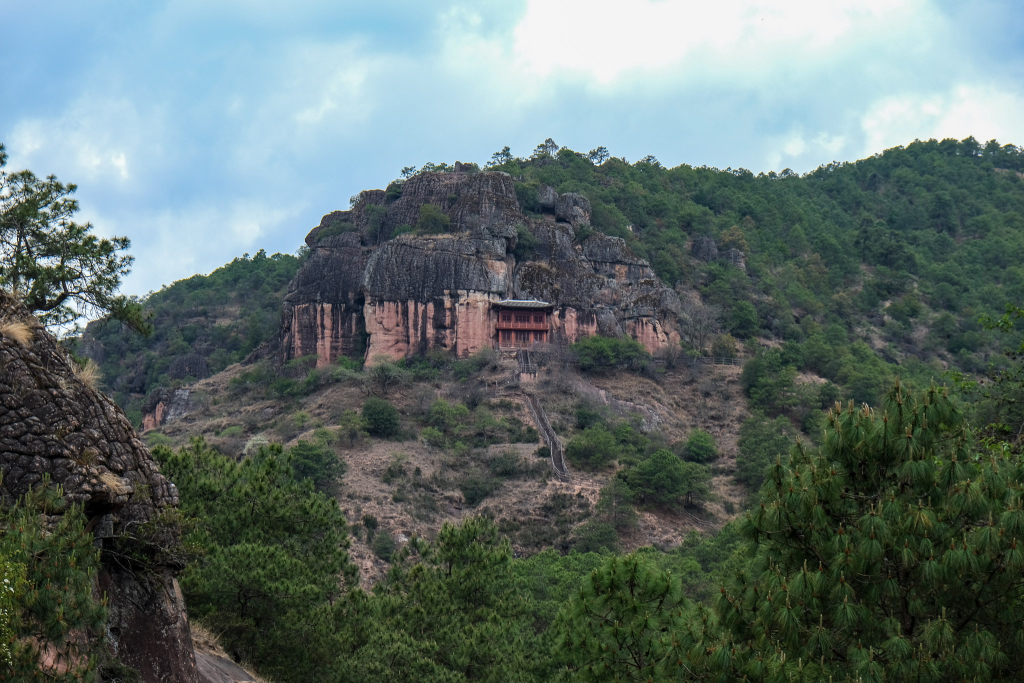
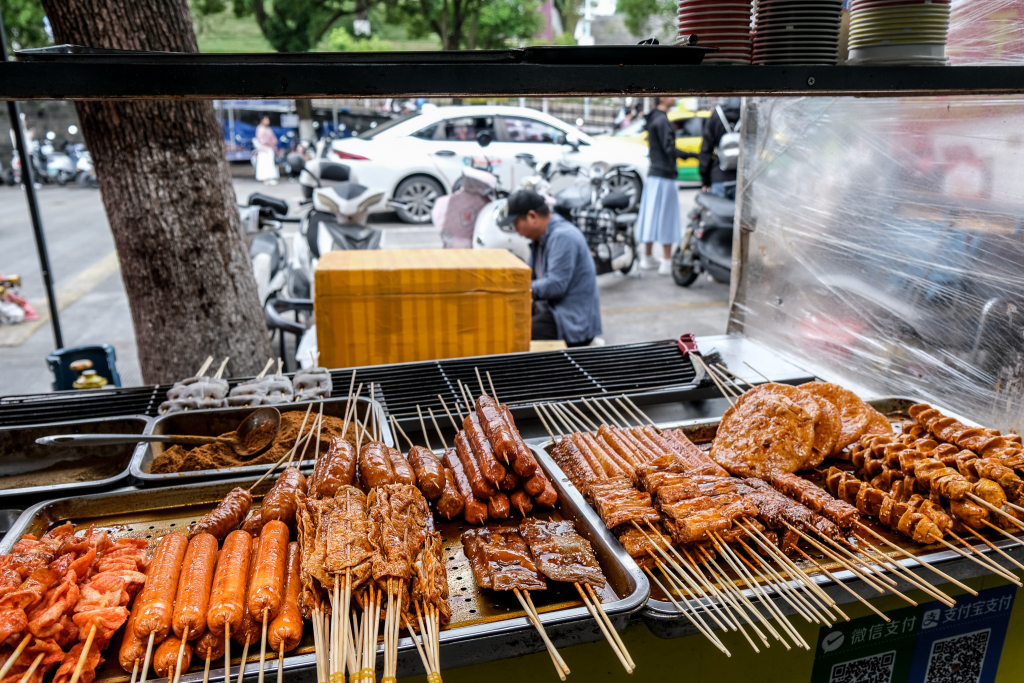
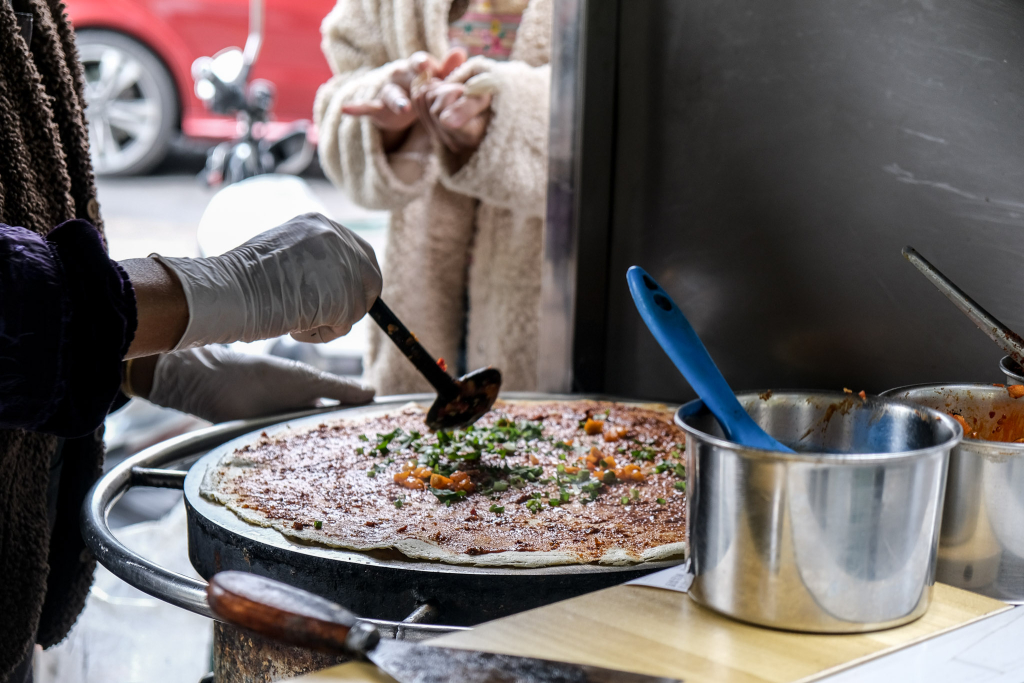
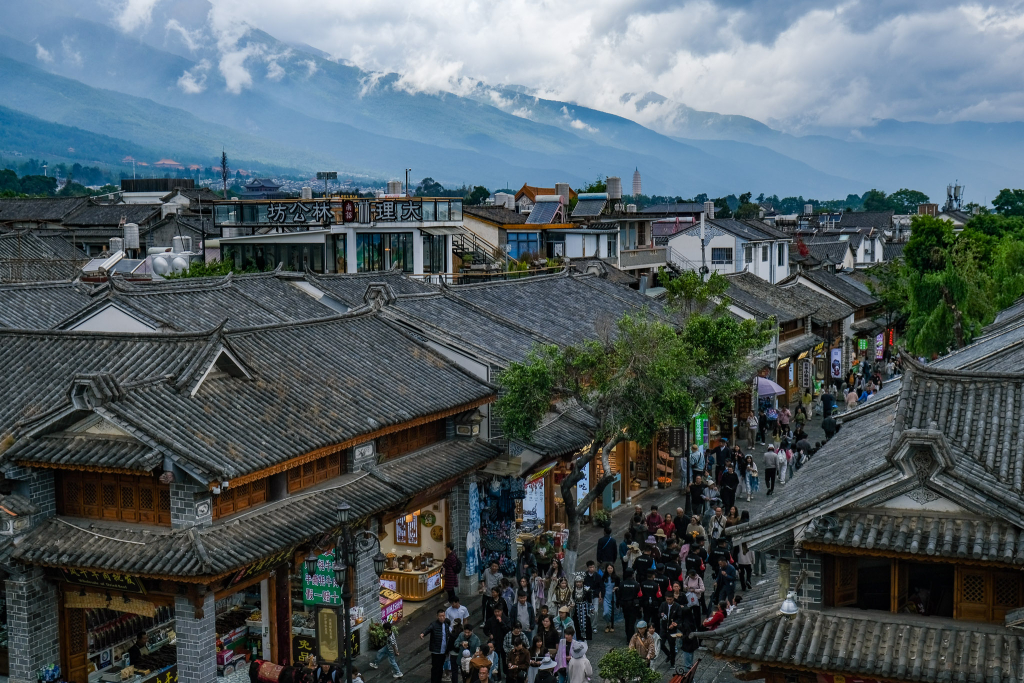
You must be logged in to post a comment.